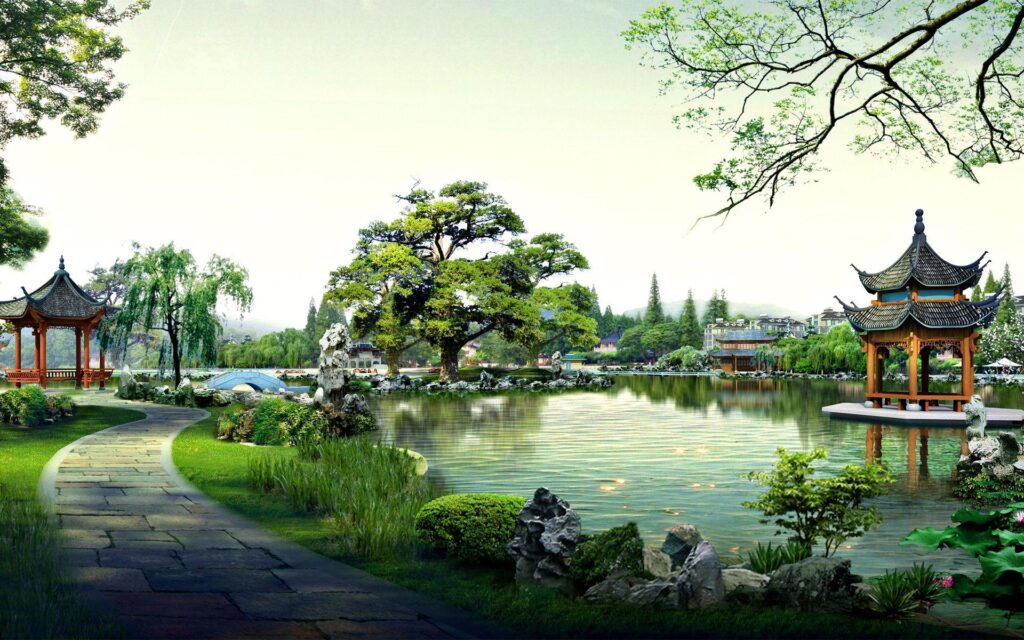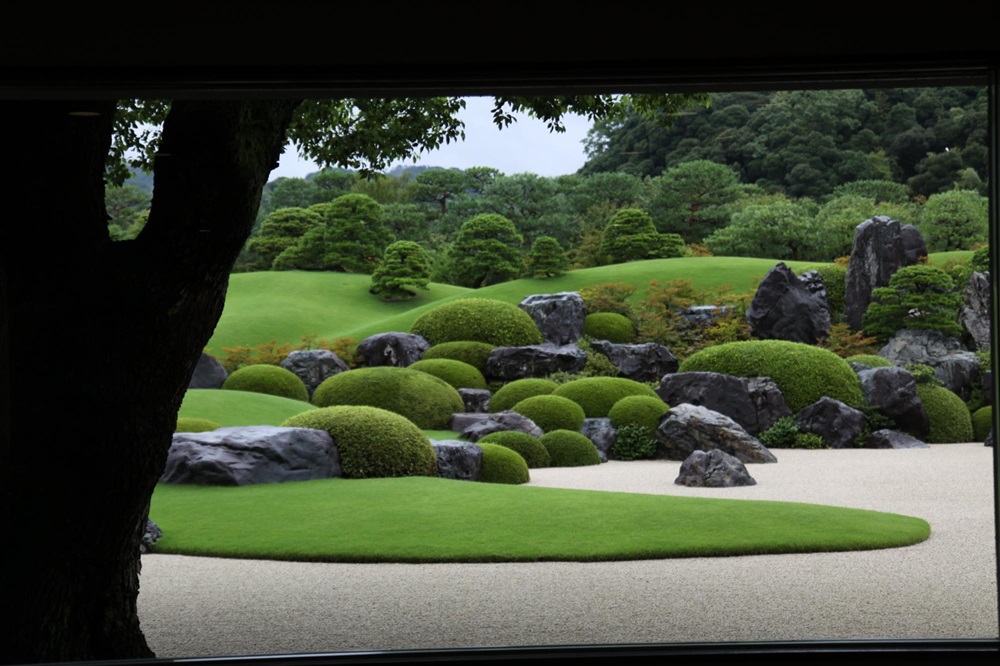The design, arrangement, and general aesthetic appeal of a garden area are all included in garden aesthetics. It entails designing a space that complements its surroundings and is aesthetically pleasant. The general placement of the garden’s plants, walkways, buildings, and other elements is called its layout and design. A well-planned and balanced arrangement should consider focus points, symmetry, and proportion.
A garden’s aesthetic attractiveness is mainly determined by the plants that are chosen for it. Plant selection for an eye-catching composition should consider colour, texture, form, and seasonal interest. A well-designed colour palette may make a garden look more beautiful. Colours enhance visual interest, set the tone, and draw attention to specific areas. The colours of the foliage and flowers should be considered as the seasons change.
A garden gains depth and intrigue from various plant textures and forms. Combining plants with varying leaf sizes, shapes, and textures can improve the aesthetics and produce visual contrast. Arbours, pergolas, trellises, and garden ornaments can give a garden architectural flair. These components can act as focus points in the landscape and support climbing plants. Hardscape components like patios, fences, paths, and water features add to the garden’s overall design. The construction and style of these features improve the overall beauty and go well with the nearby vegetation. All year long, a well-designed garden should be visually appealing. This can be accomplished by choosing plants, like ornamental grasses or evergreens, that offer seasonal blossoms, colour variations in the leaf, or winter appeal.
Japanese Garden Aesthetics
Japanese garden aesthetics have their roots in Japanese philosophy, culture, and natural enjoyment. These gardens inspire feelings of peace, harmony, and simplicity. Japanese gardens frequently include natural components like rocks, water, plants, and gravel to create a tiny version of the natural landscape. These components have been thoughtfully placed to evoke the grandeur of landscapes with rivers, mountains, and forests.

Japanese garden design relies heavily on the concepts of balance and symmetry. Placing elements like plants, rocks, and paths creates a feeling of harmony. Japanese gardens are known for their minimalism and simplicity. The beauty of the natural components is emphasised by avoiding superfluous clutter and decoration. Every element in the garden has been thoughtfully selected and arranged for optimal impact.
The Japanese aesthetic concept of wabi-sabi emphasises imperfection, transience, and the beauty of ageing. This idea is demonstrated in Japanese gardens through the intentional use of asymmetry and irregularity and the usage of aged wood and stones coated in moss. Japanese gardens frequently have an enclosed, secluded feel, acting as a haven from the outer world. This is accomplished in the garden by carefully placing vegetation, walls, fences, and hedges to create secluded and intimate areas.
Japanese culture and customs provide symbolic connotations to many garden features. For instance, water may stand for cleanliness and vitality, rocks may symbolise mountains, and some plants may have religious or cultural importance. Japanese gardens take great care to incorporate seasonal foliage, flowers, and colour changes so that they can be enjoyed all year round. Japanese gardens are constantly changing, with cherry blossoms in the spring, vibrant autumn foliage and snow-covered winter scenery.
Japanese gardens would be the same, with pathways and bridges to lead guests across the environment and allow them to see things from all angles. Often crafted to meander around the landscape softly, these pathways promote introspection and awareness.
‘Gardens or niwa provided a means of achieving the peace of mind that rulers so desperately sought during the periods of strife and conflict which marked much of Japan’s history. In its origin, the garden was representative of utopia or, more often, a paradise for Buddha. Both were Chinese concepts. The first, brought to Japan in the sixth century, was the product of China’s ancient mythology. The other gained credence as Buddhism influenced all sectors of Japanese life. Indigenous factors, such as Japan’s insularity, also impacted the development of gardens, writes Dr Koichi Kawana.
Persian Garden Aesthetics
Persian history, culture, and Islamic customs significantly influence Persian garden design aesthetics. These gardens are well known for their symmetry, structure, abundance of greenery, and creative use of architectural and aquatic features. Persian gardens are typically inspired by the idea of paradise, or “pairidaēza” in Old Persian, which refers to an earthly paradise that embodies the divine’s beauty. The idea behind these gardens is to create enclosed areas that serve as havens from the outside world. Lush flora, water features, and architectural accents create a serene and lovely retreat.

Persian gardens are renowned for their geometric patterns and harmonious arrangements. They frequently have a central axis symmetrically aligned with planting beds, walkways, and water systems. The Islamic ideal of harmony and unity is reflected in this symmetrical arrangement, which gives the impression of balance and order. Persian garden design revolves around water, representing fertility, life, and purification. Persian gardens often have reflecting basins, pools, fountains, and water channels, adding visual appeal and a calm, serene atmosphere. These water features are frequently fed by natural springs or subterranean qanats (aqueducts).
‘The philosophical design concept of Persian gardens is believed to be rooted in the four sacred elements of water, wind, fire and soil. The geometrical design of Persian gardens is reflected in Persian carpets, pottery, and visual arts. The other distinctive feature of Persian gardens, which contributes to the reflective characteristics of ancient Persian people, is the broad application of thick brick walls, which surround the entire rectangular plan of the garden. Other traits of Persian gardens include the application of perpendicular angles and straight lines, ponds and pools to supply the water and highlight the scenic landscape view, simultaneous use of evergreen and deciduous trees, planting of various types of plants and consideration of a focal pavilion known as Kooshk, writes Leila Mahmoudi Farahani, Bahareh Motamed, Elmira Jamei.
Classical Chinese Gardens
The classical Chinese philosophies of Buddhism, Taoism, and Confucianism are reflected in the rich history, cultural relevance, and symbolism of Chinese garden aesthetics. Chinese gardens provide a serene, well-balanced setting that encourages introspection, meditation, and spiritual rejuvenation. Chinese gardens aim to create harmony and balance between the energetic, masculine principle of yang and the passive, feminine principle of yin. The garden’s design reflects this balance, with features like rock and water signifying yin and yang.
Chinese gardens are intended to resemble natural environments with components like rocks, water features, plants, and pavilions arranged to resemble mountains, rivers, woods, and lakes. The idea is to create a miniature version of the natural world that captures its peace and beauty. Chinese culture, history, and philosophy have inspired the symbolic meanings of many garden features. For instance, some flora may have auspicious or metaphorical sense, rocks may stand in for mountains, and water may represent the flow of qi or life energy.

‘All the Chinese schools of thought held that everything in the universe was made up of the basic material Qi. In essence, Qi is cosmic energy or a life force; it may also refer to air or breath. Daoists contend that Qi arises from the ultimate oneness, yuan qi, and evolves into a twofold primaeval structure: zheng qi (“positive spirit”) and Xie qi (“negative spirit”). The design of a Chinese garden guided by the philosophical ideas of Daoism, Confucianism, and to a lesser extent, Buddhism, is to promote the positive spirit and eschew the negative one’, writes Donia Zhang.
The garden’s trees and plants deeply connect to people’s material and spiritual lives. If an element’s purpose contributes to the viability of urban parks, then those places may support sustainable development objectives. People like places and situations that are both challenging and easy to understand. In addition, these areas are coherent and readable, while challenging environments are mysterious and convoluted.
Architecture, with its many connotations, can represent a society’s culture and identity. In this way, the nation and the next generations receive meaning and identity through architecture and design as the interface.
Feature Image: zicasso.com
Design Aesthetics: Parametricism vs. Minimalism





